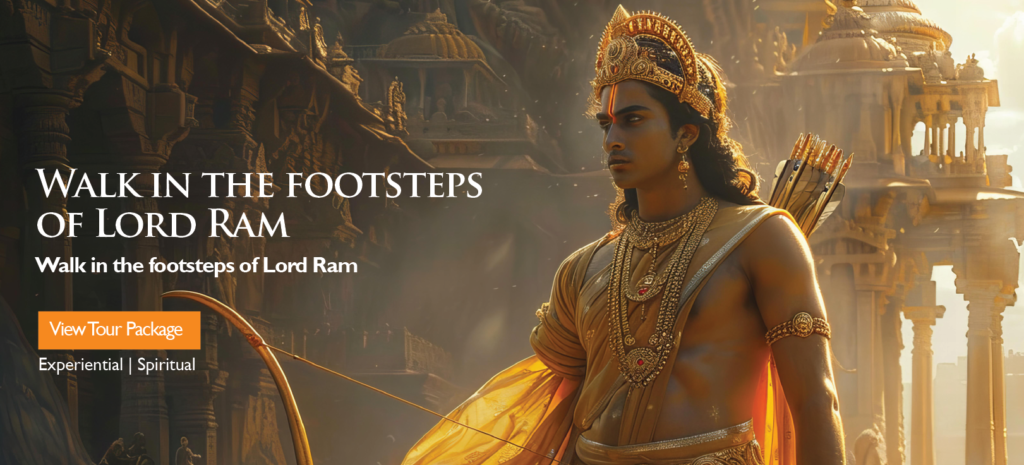Seetha Amman Temple
Visiting the Seetha Amman Temple in Seetha Eliya, Sri Lanka, is like stepping into a world of ancient tales. This temple is not just any place; it is closely linked to the famous Ramayana, a story cherished by many. According to the legends, this is where Sita Mata, the beloved wife of Lord Rama, was kept by the demon king Ravana in the lovely Ashok Vatika.
Thank you for reading this post, don't forget to subscribe!For those who honor Sita Mata, this temple holds great significance. It is a place where you can truly connect with her story. Located in the serene hills of Sri Lanka, the Seetha Amman Temple provides a calm and spiritual atmosphere. It represents strength, devotion, and the power of love. Visitors from around the globe come to witness the site of these legendary events, making it an essential stop on the Ramayana journey in Sri Lanka. Whether you are a devoted follower or just curious about the tale, the Seetha Amman Temple has a special way of reaching your heart.
History of Seetha Amman Temple
The Tale of Ashok Vatika
The Ramayana describes Ashok Vatika as a stunning garden, a lush haven in Ravana’s realm. Originally meant for enjoyment, it sadly became the place where Sita was held captive. Ravana, fueled by pride and a thirst for revenge, kidnapped Sita and took her to Lanka, confining her in this beautiful garden. His goal was not just to imprison her but to crush her spirit and force her to marry him. The garden, filled with sweet-smelling flowers and peaceful streams, turned into a mental battleground, testing Sita’s strength.
Sita’s Struggle
During her time in Ashok Vatika, Sita faced deep emotional and mental pain. Far from her beloved Rama, she dealt with loneliness and constant pressure from Ravana. However, her strong faith in Rama and her refusal to give in to Ravana’s demands showcased her resilience and loyalty. This chapter in the Ramayana highlights the victory of goodness over hardship. Sita’s determination is a powerful reminder of the lasting strength of love and fidelity.
The Temple’s Site
The Seetha Amman Temple is thought to be located where Sita was held in Ashok Vatika. While clear archaeological proof may be limited, the emotional and spiritual bond that visitors feel at the temple is strong. For many, walking on this sacred land feels like following in Sita’s footsteps, creating a real connection to the Ramayana’s events. This belief gives the temple a deep sense of history and spiritual importance.
The Ramayana Trail
The Seetha Amman Temple is an important stop on the Ramayana trail in Sri Lanka, which features various sites tied to the epic’s story. This trail offers both pilgrims and visitors a chance to engage with the Ramayana, connecting them to the legends that have influenced Hindu culture. Other notable locations, like the Divurumpola Temple and Ussangoda National Park, enhance the Ramayana journey, each providing distinct perspectives on the events of the epic.
Symbolic Importance
The Ashok Vatika, along with the Seetha Amman Temple, carries significant symbolism. It embodies Sita’s strength, her steadfast loyalty, and her enduring faith. This site serves as a reminder of the victory of good over evil, highlighting the strength of virtue in tough times. Hanuman’s role in the Ashok Vatika is also crucial. As Rama’s loyal messenger, he found Sita, conveyed Rama’s message of hope, and gave her his ring as a sign of Rama’s coming. Hanuman’s actions in the Ashok Vatika were essential in keeping Sita’s hope alive and ultimately led to her rescue, making his role vital to the importance of both the temple and the garden.
Location of Seetha Amman Temple
Seetha Eliya
- Seetha Eliya, home to the Seetha Amman Temple, is a lovely village set in the lush hills of Sri Lanka’s Nuwara Eliya district. Famous for its cool weather and stunning views, Seetha Eliya offers a peaceful atmosphere for the sacred temple. The beautiful landscape, filled with green tea fields, flowing waterfalls, and misty peaks, enhances the spiritual feel of the temple, providing a rich experience for visitors.
How to reach the Seetha Amman Temple
- Reaching the Seetha Amman Temple in Sri Lanka is quite easy, with various travel options available. The main route is by road, with good highways linking Seetha Eliya to nearby cities and towns. Visitors can use private taxis, tuk-tuks, or public buses from Nuwara Eliya, the nearest major town. For those coming from farther away, the closest train station is in Nanu Oya, where taxis and buses are easily accessible. The train ride to Nanu Oya is a highlight, showcasing the beautiful views of the Sri Lankan highlands.
Local Services and Visitor Amenities
- Although Seetha Eliya is a small village, it provides necessary services to ensure a pleasant visit for pilgrims and tourists. Close to the Seetha Amman Temple, small shops are offering religious items and souvenirs. Basic restroom facilities are typically available. Visitors can also find local restaurants and tea stalls serving traditional Sri Lankan snacks and drinks. For more extensive lodging and dining choices, travelers can stay in Nuwara Eliya, just a short drive away.
Best Times to Visit in Seetha Amman Temple
- You can visit the Seetha Amman Temple any time of the year, but the ideal times are during the dry seasons, which usually run from January to April and from August to September. The weather is more stable during these months, allowing you to enjoy the beautiful scenery of Seetha Eliya. It’s best to go in the early morning or late afternoon to avoid large crowds and soak in the temple’s peaceful vibe. Visiting during religious festivals can also offer a special cultural experience, though it may be busier.
Accessibility Considerations
- The Seetha Amman Temple is mostly accessible, but visitors with mobility issues should note that the grounds can have uneven paths and steps. It’s a good idea to ask about accessibility options and get help from temple staff if necessary. The area around Seetha Eliya also has different types of terrain. Planning and considering personal needs is key to ensuring a comfortable and inclusive visit for everyone.
Architecture of Seetha Amman Kovil
- An Insight into Temple Design: The Seetha Amman Kovil features architectural styles that highlight Dravidian influence, common in South Indian temples. Although it may not be as large as other temples, it includes key elements like a gopuram (entrance tower), beautifully carved pillars, and colorful sculptures. The temple’s simple design still conveys a sense of holiness and respect, enhancing the spiritual atmosphere of the location. The bright colors and intricate designs on the exterior add visual appeal, encouraging reflection.
- Sanctum Sanctorum: The sanctum sanctorum is the most sacred area of the Seetha Amman Kovil. It contains the main deity, Sita Mata, along with other important figures from the Ramayana. This space is where worshippers come to pray and seek blessings, creating a strong sense of devotion and spiritual connection. The main deity’s presence here is central to the temple, and it is where the key rituals are performed.
- Hanuman’s Footprints: A notable feature of the Seetha Amman Kovil is the footprints thought to belong to Hanuman. These marks, found near a stream close to the temple, are considered very sacred by worshippers. They remind devotees of Hanuman’s significant role in the Ramayana, especially his visit to the Ashok Vatika to convey Rama’s message to Sita. Many pilgrims focus on these footprints, treating them with deep respect.
- The Nearby Stream: A stream next to the Seetha Amman Kovil enhances the temple’s spiritual importance. It is said to be the same water where Sita bathed during her time in captivity. The water is regarded as sacred, and many devotees come to perform rituals and pray by its banks. The gentle sound of the flowing water adds to the calmness, making the temple feel even more peaceful.
- Spiritual Environment: The spiritual environment of the Seetha Amman Kovil is filled with calm and devotion. Nestled in the quiet hills of Seetha Eliya, the temple offers a serene setting. The blend of its architectural beauty, sacred marks, and the natural landscape creates a perfect place for reflection and spiritual thought. Many visitors feel a deep sense of peace and a connection to the divine, making their experience at the temple truly special and enriching.
Rituals and Practices at Seetha Amman Temple
Daily Pujas: At the Seetha Amman Temple, daily pujas are held to pay tribute to Sita Mata and other deities. These rituals usually include offering flowers, fruits, and incense, along with chanting mantras and prayers. Daily pujas are essential to the temple’s activities, allowing devotees to show their devotion and ask for blessings. While the timing and details of these pujas may differ, they generally adhere to traditional Hindu customs.
Offerings and Prayers: Visitors to the Seetha Amman Temple often bring offerings to show their devotion. Typical offerings consist of flowers, garlands, coconuts, and sweets. These gifts are given to the deities as a sign of respect and appreciation. Prayers are also a key part of the worship, with devotees reciting mantras and hymns dedicated to Sita Mata and other gods. Many pilgrims come to seek blessings for health, prosperity, and spiritual development.
A Sacred Ritual: Circumambulation, known as pradakshina, is a common practice at the Seetha Amman Temple. This involves walking in a clockwise direction around the main shrine or the temple itself as a sign of respect and devotion. Devotees believe this practice helps them connect with the temple’s divine energy and absorb its spiritual essence. Circumambulation is often accompanied by prayers and chanting, creating a reflective and meditative atmosphere.
Special Festivals and Celebrations: The Seetha Amman Temple celebrates many Hindu festivals, especially those linked to the Ramayana. During these important times, the temple often holds grand rituals, parades, and cultural activities. Notable festivals like Rama Navami, which marks the birth of Lord Rama, and Sita Navami, which pays tribute to Sita Mata, are especially meaningful. These events attract many devotees, filling the area with a lively and joyful spirit.
Temple Timings of Seetha Amman Temple
1. Temple timings: Knowing the Seetha Amman Temple hours is key for a smooth visit. The temple usually opens early in the morning for morning prayers. It stays open all day but closes briefly at midday for rest and cleaning. It reopens in the afternoon and remains open until evening for the evening prayers. It’s a good idea to check the exact hours with temple staff or local sources, as they can change with the seasons or special events.
2. Donations: There is typically no set entry fee for the Seetha Amman Temple, but donations are encouraged and appreciated. These donations help with the temple’s upkeep and preservation for future visitors. Devotees can make offerings at the donation boxes found within the temple. Keep in mind that any fees from local guides or vendors are not part of the temple donations.
3. Best time to visit: For a peaceful experience at the Seetha Amman Temple, it’s best to visit in the early morning or late afternoon. These times are usually less crowded, allowing for a more tranquil visit. Additionally, going during the cooler parts of the day helps avoid the heat, making it more comfortable, especially for those not used to the local weather.
4. Dress Code and Etiquette: When you go to the Seetha Amman Temple, it’s essential to follow the dress code and etiquette rules. Wear modest clothing that covers your shoulders and knees. Remember to take off your shoes before entering the main temple area. It’s important to keep quiet and speak softly inside to maintain the sacred environment. Be aware that photography might not be allowed in some places, so it’s best to ask the temple staff before taking any pictures.
5. Travel Tips and Preparations:
-
- Check the opening and closing times of the temple before you go to make sure you visit when it is open.
- Choose clothes that cover your shoulders and knees to follow the temple’s dress guidelines.
- Be ready to take off your shoes before entering the main sacred area or other special spots.
- Make sure you have enough Sri Lankan Rupees, as credit cards might not be accepted in Seetha Eliya.
- Keep quiet, speak gently, and follow any rules about taking photos to help maintain the temple’s calm environment.
Sri Lanka Seetha Amman Temples and Ramayana Trails
The Ramayana Trail
- The Seetha Amman Temple is an important stop on the Ramayana trail in Sri Lanka, which features places linked to the epic story.
- This trail allows both pilgrims and visitors to connect with the legendary events of the Ramayana.
- It’s not just about seeing the sights; it’s a spiritual experience.
- By exploring these locations, worshippers can engage with the story, imagining the events and feeling a stronger bond with the characters and their journeys.
- The trail showcases Sri Lanka’s deep historical and cultural connections to the Ramayana, highlighting the epic’s lasting impact on the island.
Key Related Sites in Sri Lanka
- Divurumpola Temple: This temple is thought to be where Sita faced the “Agni Pariksha” (trial by fire) to prove her purity. It holds great importance for worshippers, representing Sita’s steadfast virtue.
- Ussangoda National Park: This distinctive area, with its red soil, is believed to be part of the battlefield where Rama’s forces fought against Ravana’s army. Its unusual landscape adds to its charm and historical importance.
- Ravana Ella Falls: These waterfalls are linked to Ravana, with legends saying he hid in the caves behind them. The natural beauty of the falls and their connection to the Ramayana make them a favored spot for visitors.
- Munneswaram Temple: Although it has a history beyond the Ramayana, this temple is also associated with Rama, as it is said that he prayed to Shiva here after defeating Ravana and committing Brahmahatya dosha.
- Together with the Seetha Amman Temple, these sites create a network that brings the Ramayana to life, providing a rich understanding of the epic’s connection to Sri Lanka.
The Lasting Impact of Seetha Amman Temple
The Seetha Amman Temple is a strong symbol of the lasting impact of the Ramayana, a tale that remains significant to many. It serves not only as a worship place but also as a vibrant reminder of Sita’s loyalty, courage, and strength. For both pilgrims and visitors, exploring this sacred location is a way to dive into the essence of a cherished story and connect with the timeless lessons of the Ramayana.
Looking to take a complete Ramayana tour? Plan your trip with Yatraveda! Yatraveda offers detailed information and support for those wanting to visit sacred places like the Seetha Amman Temple. With Yatraveda, travelers can find out about temple hours, rituals, and local traditions, ensuring a respectful and enriching experience. It also provides information on the wider Ramayana route, helping visitors discover other important sites in Sri Lanka. Yatraveda can take care of all your travel arrangements, making your trip easy and enjoyable.
FAQ’s
Q: Where is the Seetha Amman Temple located?
A: The Seetha Amman Temple is located in Seetha Eliya, a village in the Nuwara Eliya district of Sri Lanka.
Q: What is the dress code for Seetha Amman Temple?
A: Visitors are expected to dress modestly. This means clothing should cover shoulders and knees. Avoid revealing or overly casual attire.
Q: Can you tell me about the Seetha Amman Temple’s history?
A: The Seetha Amman Temple is believed to be located on the very spot where Sita was held captive by Ravana in the Ashok Vatika, as described in the Ramayana. This historical connection makes it a significant pilgrimage site.
Q: What are the Seetha Amman Temple timings?
A: The temple typically opens early in the morning and closes in the evening, with a possible midday closure. It’s best to confirm the exact timings with local sources or temple authorities, as they may vary.
Q: What is the story of Seetha Eliya?
A: Seetha Eliya is significant because it’s believed to be the location of the Ashok Vatika, where Sita was held by Ravana. The area is steeped in Ramayana lore, and the village takes its name from Sita.
Q: Which temple in Sri Lanka has Hanuman’s footprint?
A: The Seetha Amman Temple in Seetha Eliya is where footprints believed to belong to Hanuman are located near a stream adjacent to the temple.







